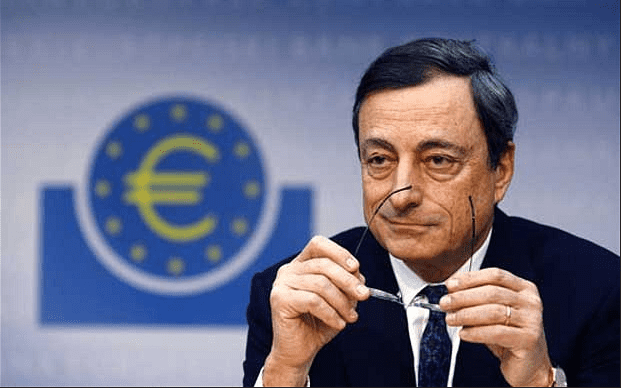Is Deflation Inevitable In The EU?
The European Union looks set on a path to deflation.
With debt and unemployment at high levels, and the EU interest rate already near zero, the prospect of recent official rate cuts causing a change in direction seems hopeful at best.
Today we consider whether a Japanese-style ‘lost decade’ is on the horizon for the EU.
Disinflation Despite Growth
After the release of extremely low inflation figures at the end of October, the European Central Bank (ECB) acted quickly to reduce the cash rate from 0.5% pa to 0.25% pa.
The rationale was clear – as outlined by the ECB “once the first signs of deflation are showing, it’s already too late to do something. So we’re avoiding playing with fire.” This indicates that even if the ECB says generalized deflation across the EU is not on the horizon, it is keenly aware of its dangers.
The ECB has two very good reasons to fear deflation. The first has to do with consumers putting off purchases in the expectation that prices will continue to fall. The second reason is debt. If the price of money does decrease debtors have to pay more to repay their loans – and currently all EU members have a lot of debt.
As shown in the graph below, the inflation rate for the EU has been on a trend decline since October 2012.

The rate fell to 0.7% in October. Inflation has not been this low since the immediate aftermath of the GFC in 2009 when economic growth plunged to negative figures. Current disinflation is a cause for concern because it is happening despite the EU technically surfacing from recession earlier this year.
Why is this happening?
It is evident in the graph below that the drop in inflation in both 2008/09 and the current decline follow trends in falling energy prices.
European inflation and its main components (2002-2013)

In the year to October 2013, energy prices dropped 1.7% with Brent crude oil down 6%. This has led some commentators to point to energy prices as the primary culprit for current deflationary fears. Technically, a reduction in energy prices may in fact reduce inflation, but it is not a trigger for deflationary spirals. Rather, reductions in energy prices have expansionary flow on effects, enabling businesses to reduce production costs and increasing household disposable income. For these reasons, we do not see the decline in energy prices as a contributing factors to EU disinflation trends.
The key issue for the EU is increasing unemployment as a result of reduced aggregate demand in the EU region.
The graph below shows unemployment in the EU increasing since late 2011. The current rate of 12.1% is only just below the highest figure the union has ever seen. Such high levels inevitably become a strain on government budgets as welfare payments increase while tax collections decrease, as well as decreasing overall demand and spending within an economy.

The relationship between unemployment and demand is reinforcing
With such high unemployment and the prospect of declining wages, it is little wonder that consumer confidence has been low over the period since the crisis. As outlined below, consumer and business sentiment has been below 100 for some years now, but is interestingly showing an upward trend in recent months.

This increase in sentiment is also consistent with the most recent Neilson consumer confidence survey, which showed that sentiment had brightened in Europe in the second quarter of 2013. However the figures remain very low for most European countries: Greece at 48, Italy 47, Spain 56, France 61. To be expected, Germany was the standout at 92.
The graph below shows that despite increases in consumer confidence, consumption has not also increased and remains in negative numbers.

International Comparisons Make EU’s Prospects Worse
Regardless of whether using the EU17 (those countries who use the €Euro) or EU28 (all members of the union) rate, unemployment has increased significantly since 2009. This is to be expected in times of recession. However this sits in contrast with the US, which has managed to reduce unemployment over the same period.
The graph below compares the unemployment level of the EU, US and Japan. The comparison with Japan is the most concerning. For the majority of the 2000’s Japan suffered the debilitating effects of deflation. Despite negative increases in price over the period, which generally throws economies into seizures, the unemployment rate was around the level of natural unemployment, and was much lower than the current rate in Europe.
This comparison is important because if Europe is on the precipice of deflation, their ability to get out of such a downward price spiral will prove more difficult than Japan as the current level of unemployment will act to accelerate the deflationary spiral.

Conclusion
Deflation is a difficult beast to tame. Japan lost a decade in the 2000’s and has still be unable to arrest the deflationary trend despite massive government stimulus packages now reaching into the trillions of dollars.
To deal with the prospect of deflation in the EU there must be a commitment to substantially reducing unemployment. How this is practically achieved is another matter. So far the effectiveness of monetary policy in addressing either unemployment or disinflation has been dismal at best as its expansionary impacts have largely been offset by contemporaneous government austerity measures. A new way is necessary if the EU is to avoid an impending deflation trap.




